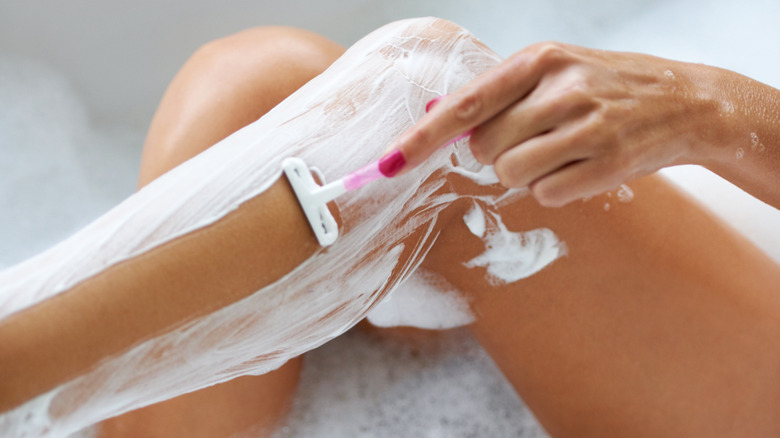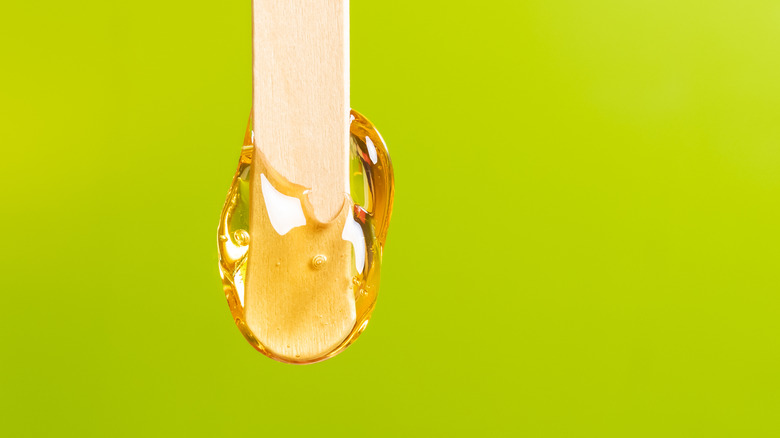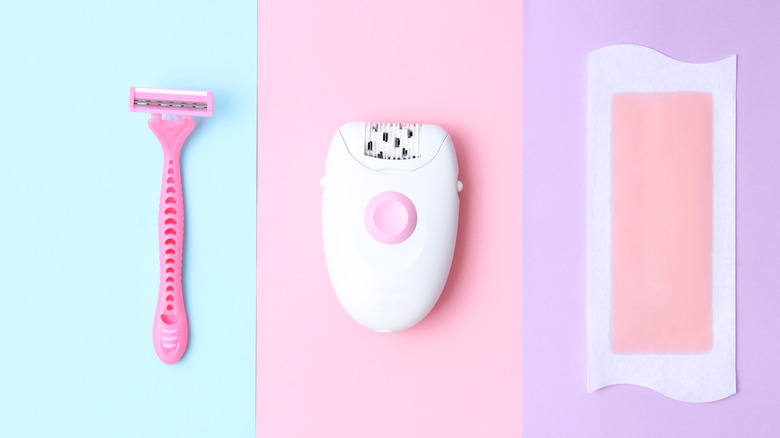Shaving Vs Waxing: Which Is Better At Preventing Ingrown Hairs?
Ingrown hair — we hate them, don't like seeing them grow, and wish we could stop ingrown hairs completely for the rest of our lives. It's probably not a reach to say that everyone agrees that ingrown hairs are an absolute nuisance, not because they're an eyesore, but because they can sometimes cause pain, too.
Unfortunately, as long as there's hair growing on your body, you're bound to keep getting ingrown hairs. They can appear anywhere that grows hair, but they're more prevalent in areas of your body where you perform hair removal often — think your legs, underarms, pubic area, and chin. When the hair grows back, you sometimes see stubborn strands that refuse to rise past the surface of the skin, resulting in pesky, uncomfortable bumps. And unless you opt for laser removal to dodge hair growth altogether, expect to welcome these angry bumps occasionally.
Not everyone wants to undergo laser hair removal, so many turn to the trusted and proven methods: waxing and shaving. These are the most cost-effective options for hair removal because you can do them on your own at home. Both, however, facilitate the development of ingrown hair. But can one method actually help in preventing its growth?
Neither shaving or waxing can completely stop the growth of ingrown hair
Bad news — manual hair removal not only causes ingrown hair but even encourages its growth. According to Jodi Shays, the owner, and founder of QB Skincare, waxing, if done correctly, can lower your chances of growing more of those annoying bumps. It may be the more painful method, but hair grows back slower. "Waxing lasts longer over time because hair is being removed from the follicle whereas shaving just cuts it at the surface," Shays explained to Byrdie. "Waxing will leave you smoother longer as unwanted hairs become thinner and in some cases don't grow back at all."
If you can't stand the pain of waxing, though, there is still a way to prevent ingrown hair from shaving. The Mayo Clinic suggests moisturizing the skin with water and mild facial cleanser, as well as applying shaving cream minutes before you let your razor do its thing. This helps soften the hair and reduce friction. You may also want to use an electric razor that can perform precise shaving, but if you don't have access to one, see to it that you're using a fresh blade.
Other hacks to prevent ingrown hair
A fool-proof and undeniably the easiest way to bid goodbye to ingrown hair is laser hair removal. But this method is costly and can take months to enjoy noticeable results. The good news is if you opt for waxing, shaving, or even plucking and tweezing, it only takes an extra step to help reduce the likelihood of incurring ingrown hair: exfoliation.
New York City-based board-certified dermatologist Dr. Joshua Zeichner told Allure that when you exfoliate before manual hair removal, you'll "lower the risk of the hairs becoming trapped." You can use chemical exfoliators like glycolic or salicylic acid or natural options like sugar or coffee scrub. "These exfoliators dissolve connections between cells on the surface of the skin to prevent hairs from becoming trapped," Zeichner added.
And while getting ingrown hair is frustrating, whatever you do, don't attempt to take them out on your own. You'll only be doing more harm than good. "If you can't see the hair, don't go digging for it, because it could be another type of inflammatory cyst—like a pimple—that doesn't actually have a hair," Dr. Gary Goldenberg, assistant clinical professor of dermatology at the Icahn School of Medicine at Mount Sinai Hospital shared with Self. "Either way, if you go picking, popping, or digging, you could cause an infection, scarring, or further irritation."


